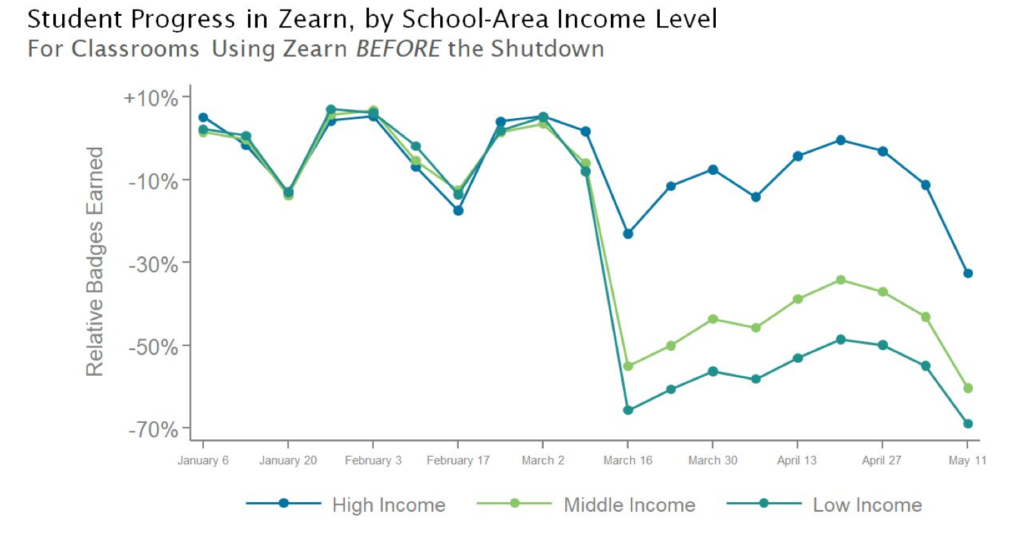I have been wondering if anyone would find a way to evaluate student learning during the pandemic. Obviously, this was an emergency situation with schools having little time to prepare and access from home was inconsistent from family to family. Some schools ended just shutting down early.
I found these data presented in another blog and I thought the approach was quite creative. The data were collected by an organization (Opportunity Insights) who realized that they could access the number of “badges” received by students enrolled in an online math curriculum (Zearn). I am not familiar with this program, but it seems to be an individualized approach used by some schools.

Opportunity insights compared the badges earned over time (before and after students learned at home) broken down by the average income level of families attending multiple schools. The breakdown is by school and not family income. As you can see, there are dramatic differences in achievement.
The blog post I cite offers possible explanations. While these data are important and informative, I don’t find them surprising. I hope this data set ends up published somewhere by the original researchers. One is left to speculate. Are these differences a function of the proportion of students who simply disappeared once everyone learned from home? Would it be possible to determine time on task? What other insights might be provided by educators from these three categories of schools?
These data offer a significant challenge. How might this differentiated be prevented.
![]()

You must be logged in to post a comment.